Volume 9-14 (2020-26)
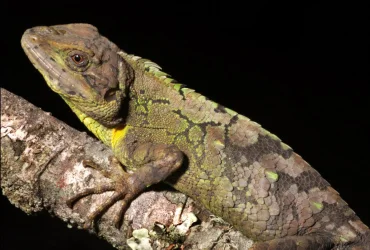 v13i1.327
v13i1.327ISSN: 1800-427X (printed)
eISSN: 1800-427X (online)
DOI:10.47605/tapro.v13i1.327
Submitted date: 27 June 2023
Accepted date: 30 April 2024
Published date: 30 May 2024
Pp. 34.
A blackbird (Turdus simillimus) predates on a Polypedates frog in Sri Lanka
D.M.D.S.M. Dissanayaka, D.E.N. Mandawala* D.M.T.M.K. Dissanayaka
*Corresponding author. E-mail: nipunika001@gmail.com
The Indian blackbird (Turdus simillimus) is the only all-black thrush found in Sri Lanka with a reddish-orange beak, feet, and eye rings and both sexes are almost identical in appearance. The feeding ecology of the blackbird is described as omnivorous with primarily animal prey, feeding on a wide range of invertebrates such as insects, spiders, snails, and earthworms. They also feed on seeds, berries, and ripened fruits when in season.
Section Editor: Aasheesh Pittie
eISSN: 1800-427X (online)
DOI:10.47605/tapro.v13i1.327
Submitted date: 27 June 2023
Accepted date: 30 April 2024
Published date: 30 May 2024
Pp. 34.
A blackbird (Turdus simillimus) predates on a Polypedates frog in Sri Lanka
D.M.D.S.M. Dissanayaka, D.E.N. Mandawala* D.M.T.M.K. Dissanayaka
*Corresponding author. E-mail: nipunika001@gmail.com
The Indian blackbird (Turdus simillimus) is the only all-black thrush found in Sri Lanka with a reddish-orange beak, feet, and eye rings and both sexes are almost identical in appearance. The feeding ecology of the blackbird is described as omnivorous with primarily animal prey, feeding on a wide range of invertebrates such as insects, spiders, snails, and earthworms. They also feed on seeds, berries, and ripened fruits when in season.
Section Editor: Aasheesh Pittie
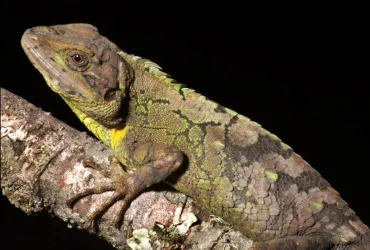 v13i1.326
v13i1.326ISSN: 1800-427X (printed)
eISSN: 1800-427X (online)
DOI:10.47605/tapro.v13i1.326
Submitted date: 26 July 2023
Accepted date: 30 April 2024
Published date: 30 May 2024
Pp. 33.
A new record of cotton pygmy goose (Nettapus coromandelianus) in Bhutan
S. Nidup, J. Tenzin* & P. Wangmo
*Corresponding author. E-mail: jigmetenzin16@gmail.com
The cotton pygmy goose (Nettapus coromandelianus Gmelin, 1789) is a dabbling duck species found in the wetlands of India, Nepal, Bangladesh, and SE Asia. The species is listed as a Least Concern due to its wide distribution and stable population estimated to be 130,000 to 1.1 million individuals. A cotton pygmy goose was sighted on 17 May 2023 at a sewage pond in Gelephu (26.858N, 90.493E) in the Sarpang District, which is located at an altitude of 200 m a.s.l in the southern central part of Bhutan. This is the first reported occurrence of pygmy goose in Bhutan.
Section Editor: Johan Mooij
eISSN: 1800-427X (online)
DOI:10.47605/tapro.v13i1.326
Submitted date: 26 July 2023
Accepted date: 30 April 2024
Published date: 30 May 2024
Pp. 33.
A new record of cotton pygmy goose (Nettapus coromandelianus) in Bhutan
S. Nidup, J. Tenzin* & P. Wangmo
*Corresponding author. E-mail: jigmetenzin16@gmail.com
The cotton pygmy goose (Nettapus coromandelianus Gmelin, 1789) is a dabbling duck species found in the wetlands of India, Nepal, Bangladesh, and SE Asia. The species is listed as a Least Concern due to its wide distribution and stable population estimated to be 130,000 to 1.1 million individuals. A cotton pygmy goose was sighted on 17 May 2023 at a sewage pond in Gelephu (26.858N, 90.493E) in the Sarpang District, which is located at an altitude of 200 m a.s.l in the southern central part of Bhutan. This is the first reported occurrence of pygmy goose in Bhutan.
Section Editor: Johan Mooij
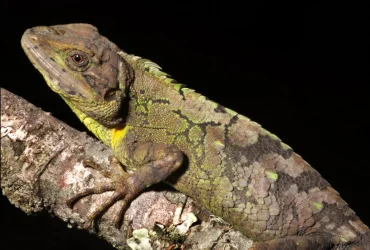 v13i1.325
v13i1.325ISSN: 1800-427X (printed)
eISSN: 1800-427X (online)
DOI:10.47605/tapro.v13i1.325
Submitted date: 31 October 2023
Accepted date: 30 April 2024
Published date: 30 May 2024
Pp. 31-32.
Progressive greying in the white-eared bulbul (Pycnonotus leucotis)
D.K. Jangir, R. Choudhary*, V. Sharma & S. Dutta
*Corresponding author. E-mail: rounakchoudhary17@gmail.com
Birds have long captured the fascination of ornithologists, in part due to their captivating and charismatic plumage colorations. Deviations from the normal in their plumage often result in what is known as aberrant plumage, a phenomenon that has been documented globally.
Section Editor: Barry W. Brook
eISSN: 1800-427X (online)
DOI:10.47605/tapro.v13i1.325
Submitted date: 31 October 2023
Accepted date: 30 April 2024
Published date: 30 May 2024
Pp. 31-32.
Progressive greying in the white-eared bulbul (Pycnonotus leucotis)
D.K. Jangir, R. Choudhary*, V. Sharma & S. Dutta
*Corresponding author. E-mail: rounakchoudhary17@gmail.com
Birds have long captured the fascination of ornithologists, in part due to their captivating and charismatic plumage colorations. Deviations from the normal in their plumage often result in what is known as aberrant plumage, a phenomenon that has been documented globally.
Section Editor: Barry W. Brook
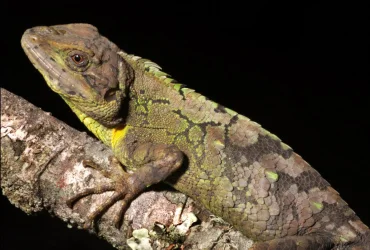 v13i1.324
v13i1.324ISSN: 1800-427X (printed)
eISSN: 1800-427X (online)
DOI:10.47605/tapro.v13i1.324
Submitted date: 7 July 2023
Accepted date: 30 April 2024
Published date: 30 May 2024
Pp. 30.
On the parental care of the dwarf snakehead (Channa kelaartii) in Sri Lanka
J. Bandara*, M.P. Gunawardena & S.R.D Ranaweera
*Corresponding author. E-mail: janaminabandara@gmail.com
The dwarf snakehead, Channa kelaartii (Günther, 1861) is a freshwater fish, widely distributed in streams and ponds of Sri Lanka and south India. This paper describes a record of intraspecific aggression behavior exhibited by C. kelaartii as a display of parental care in a natural ecosystem, along with a few other observations on parental care and protective instincts. Fishes were identified in the field, based on their morphological characters.
Section Editor: Upali S. Amarasinghe
eISSN: 1800-427X (online)
DOI:10.47605/tapro.v13i1.324
Submitted date: 7 July 2023
Accepted date: 30 April 2024
Published date: 30 May 2024
Pp. 30.
On the parental care of the dwarf snakehead (Channa kelaartii) in Sri Lanka
J. Bandara*, M.P. Gunawardena & S.R.D Ranaweera
*Corresponding author. E-mail: janaminabandara@gmail.com
The dwarf snakehead, Channa kelaartii (Günther, 1861) is a freshwater fish, widely distributed in streams and ponds of Sri Lanka and south India. This paper describes a record of intraspecific aggression behavior exhibited by C. kelaartii as a display of parental care in a natural ecosystem, along with a few other observations on parental care and protective instincts. Fishes were identified in the field, based on their morphological characters.
Section Editor: Upali S. Amarasinghe
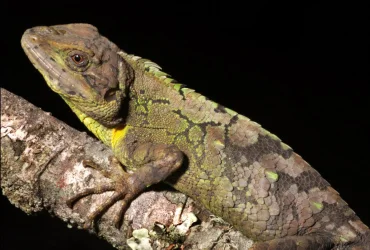 v13i1.323
v13i1.323ISSN: 1800-427X (printed)
eISSN: 1800-427X (online)
DOI:10.47605/tapro.v13i1.323
Submitted date: 19 September 2023
Accepted date: 30 April 2024
Published date: 30 May 2024
Pp. 28-29.
Tracking the migration of Albatross butterflies (Appias sp) in Sri Lanka
P.K. Dissanayake*, R. Gamage2, R.W.D.L. Kumara, N. Weerasinghe, D.M.N.P. Daundasekara, H.S.B. Wijesinghe & S.K. Gunatilake
*Corresponding author. E-mail: kapila@agri.sab.ac.lk
Among insects, butterfly migration is an eye-catching behaviour that occurs around the world. The mass migration of butterflies is little understood. In Sri Lanka, mass migrations of butterflies were recorded in the past, but they are now rare. Although those large migrations have not been observed during the past decades, more isolated small migrations do still occur occasionally. However, no definite direction of flight has been identified for these migrations except for point observations of directions. It is unclear in most instances where the butterfly migrations in Sri Lanka begin and end. Therefore, here we report observations on the migrations of two butterflies, the lesser Albatross (Appias galene Felder & Felder, 1865) and common Albatross (A. albina swinhoei Moore, 1905) during the inter-monsoonal period from March to April 2023. Observations were made at 60 random locations to determine the starting point and the directions of migration.
Section Editor: David G. James
eISSN: 1800-427X (online)
DOI:10.47605/tapro.v13i1.323
Submitted date: 19 September 2023
Accepted date: 30 April 2024
Published date: 30 May 2024
Pp. 28-29.
Tracking the migration of Albatross butterflies (Appias sp) in Sri Lanka
P.K. Dissanayake*, R. Gamage2, R.W.D.L. Kumara, N. Weerasinghe, D.M.N.P. Daundasekara, H.S.B. Wijesinghe & S.K. Gunatilake
*Corresponding author. E-mail: kapila@agri.sab.ac.lk
Among insects, butterfly migration is an eye-catching behaviour that occurs around the world. The mass migration of butterflies is little understood. In Sri Lanka, mass migrations of butterflies were recorded in the past, but they are now rare. Although those large migrations have not been observed during the past decades, more isolated small migrations do still occur occasionally. However, no definite direction of flight has been identified for these migrations except for point observations of directions. It is unclear in most instances where the butterfly migrations in Sri Lanka begin and end. Therefore, here we report observations on the migrations of two butterflies, the lesser Albatross (Appias galene Felder & Felder, 1865) and common Albatross (A. albina swinhoei Moore, 1905) during the inter-monsoonal period from March to April 2023. Observations were made at 60 random locations to determine the starting point and the directions of migration.
Section Editor: David G. James
Hubungi Kami
The ultimate aim of the journal is to provide an effective medium for communication of the latest and best scientific information.
Copyright © 2020 Taprobanica. All Rights Reserved
Jasa Pembuatan Website by IKT




